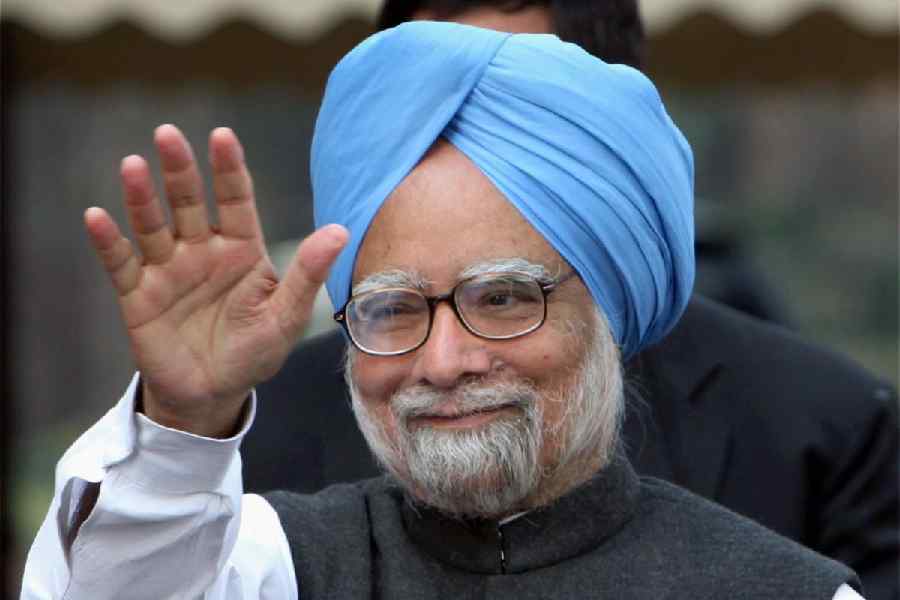 |
| Cointreau kulfi with drunken boondi |
When I was a young man in bell bottoms, I used to potter around Old Delhi all day. I’d browse around for books, and then hail some passing vendor to buy a crispy kachori or a juicy jalebi. And one of the vendors I used to be on the lookout for was the kulfiwallah. He used to sell his kulfi in a big vessel which was covered with felt. Inside that was a layer of ice and then the kulfi, which was one big mass. He would take a sharp object and cut out a wedge, put it on a sal leaf, weigh it, and then give it to us.
Since then the kulfi has had a makeover. Gone are those days when they were sold in round cigarette tins. The kulfi had a stick attached to it, the kulfiwallah would pull it gently and the kulfi would come out of the cigarette tin unscathed.
I realised how kulfis had changed when I went to one of the most popular dining hubs of New Delhi — the Pandara Road Market. I found an ice cream parlour selling all kinds of kulfis, flavoured with everything from mangoes and oranges to coffee and dark chocolate.
 |
| Paan liqueur and mint kulfi |
But I find that even that is now passé. Chef Sharad Dewan, who always comes up with interesting variations of old recipes, has been experimenting with kulfi and liqueur. I had a wonderful kulfi at The Park, in Calcutta, where the chef is the area director (food production). The kulfi had been flavoured with Cointreau and served with something called drunken boondis — those small juicy globules that quite a few laddoos are made of. In this case, of course, the boondis had had an encounter with the liqueur, and were suitably sloshed!
I find quite a few other chefs have been experimenting with liqueurs and kulfi too. Chef Ranveer Brar, who’s with the Novotel Mumbai Juhu Beach Hotel, believes that liqueurs work well with rabri-based desserts such as the kulfi. “Liqueurs are best paired with dishes that are sweet and lactic,” he says. “They go with something like shahi tukda and the Parsi lagan nu custard, for instance.”
Of course, what’s important is to get your kulfi right to begin with. And that, all the chefs tell me, is a matter of practice. You have to thicken the milk just right. Bringing the milk down to half its original volume is more or less the right way of preparing the rabri for kulfi.
Suprabhat Roy, the executive chef of Delhi’s Eros Hilton Hotel, has been experimenting with kulfis and liqueurs too. His saffron-flavoured kulfi presented on a bed of pistachio bread crumbs and flavoured with the Italian pistachio nut Dumante liqueur is a great success. “The liqueur complements the flavour of the saffron while not changing the colour of the kulfi,” he says.
One liqueur that goes well with kulfis is Baileys Irish cream. The Irish liqueur makers tell us that the milk of some 40,000 Irish cows — who are out in the open nine months a year, feasting on four different kinds of grass — goes into the making of Baileys. Fresh cream is mixed with Irish whiskey, and then flavoured with cocoa, vanilla and sugar.
Likewise, the orange flavour of the Cointreau adds to the taste of the rabri in a kulfi. I read somewhere that the secret recipe of the 150-year-old liqueur involves a mix of sweet and bitter oranges. Sun-dried orange peels are distilled in burnished red copper stills. And the oil is mixed with alcohol, sugar and water — producing that delightful liqueur.
Chef Dewan uses Cointreau for his kulfis well as I learnt from my close encounter with the drunken boondis. The flavours of orange in vodka work with a kulfi flavoured with the heavenly Gondhoraj and orange marmalade. But for his apple pie kulfi, I find that he uses dark rum.
 |
| Mandarin vodka, marmalade and gondhoraj lemon kulfi |
Of course, our own paan liqueur can be used to flavour Indian desserts too — as chef Dewan does in his paan liqueur and mint kulfi. The chefs tell me that another flavour — coconut in liqueur — goes beautifully with kulfis. Both chef Roy and chef Dewan use Malibu liqueur to flavour their sweets, while the former also mixes Passoa — a passion fruit liqueur — with mango kulfi.
In my opinion, liqueurs work better with kulfis than ice creams. Because kulfis are denser, they take longer to melt and are better at infusing the flavours of the liqueur.
Chef Brar, however, adds that you can try out liqueurs with some other Indian desserts too. Something syrupy like jalebi or gulab jamun goes well with the orange-based Cointreau or Grand Marnier. “The liqueurs work well with malpuas too,” he says.
I like the concept of pairing Indian desserts with Western liqueurs. We have always taken pride in the kulfi, which can give any branded ice cream a run for its money. And the kulfi has a rich history behind it too. Food historian K.T. Achaya says that the dessert is mentioned in the Ain-i-Akbari of 1590. And with, say, France and Ireland’s old and secret alcohol recipes, East meets West in the best of ways.
Bailey’s Kulfi with Rum-soaked Falooda
(to make 4)
 |
Ingredients:
For the kulfi base (works as the base for almost all kulfis)
• 500ml milk • 250ml full cream
• 100g sugar
For Baileys kulfi:
• 120ml Baileys liqueur • 20ml dark rum • 30g falooda
Method:
Heat and reduce the milk to half its quantity. Add cream and sugar and then cook for another 5 minutes. Keep it aside for cooling. Now, add the Baileys liqueur. Take kulfi moulds and fill them with the Baileys kulfi mixture and freeze them overnight. Meanwhile, soak the falooda in rum (such as Old Monk) and refrigerate it. De-mould the kulfi and serve chilled garnished with rum-soaked falooda.











